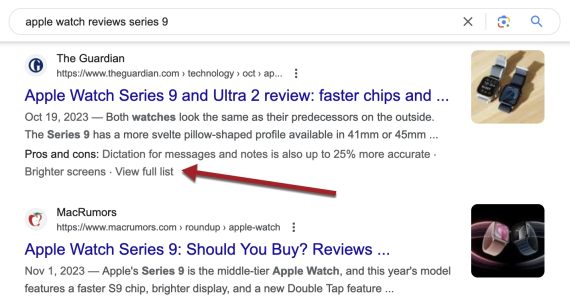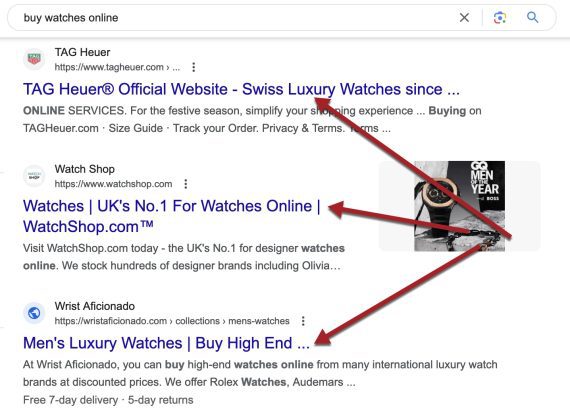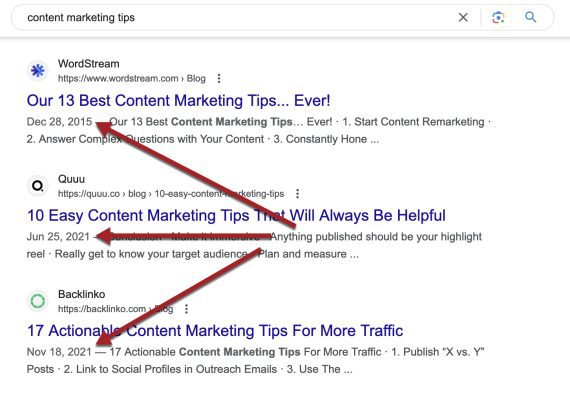Search engine optimization is changing. Generative AI is streamlining many SEO-related tasks, and search-result pages are evolving. Yet companies with small-to-medium websites and an SEO-friendly content management system or ecommerce platform can do much SEO work in-house.
Here are my top 10 do-it-yourself SEO tips, including related ChatGPT prompts.
1. Research Keywords
Keyword research has dual benefits. First, discovering and organizing relevant search queries reveals the words and phrases consumers use to find goods and services. Merchants can use those keywords in product descriptions, titles, and blog posts — all to improve organic search rankings.
Second, knowing how consumers search for wants and needs uncovers competitors (that rank for those keywords) and generates ideas for new or improved products.
There are quite a few free and freemium keyword research tools. Organizing keywords by a common intent is time-consuming but doable with spreadsheets.
ChatGPT can expand a keyword list. Here’s a prompt:
My primary term is [KEYWORD]. Generate a list of related keywords to capture the attention of those who may not know about [KEYWORD] but can find It helpful. For each related keyword, produce an article title and angle for how it helps. Respond in a table format.
Here’s the response, which I repurposed into a responsive table:
| Keyword | Article Title | Article Angle |
|---|---|---|
| Alternative lending options | "Why Peer-to-Peer is the Future of Lending" | Exploring the evolution of lending and introducing P2P as a leading option. |
| Non-traditional loans | "Steppping Outside the Bank: Embracing Non-Traditional Loans" | Comparing traditional bank loans to P2P lending. |
| Online load platforms | "Navigating Online Load Platforms: The Rise of P2P Lending" | Overview of online platforms with a focus on P2P profits. |
| Loans for individuals with bad credit | "Finding Hope with Peer-to-Peer Lending for Bad Credit Individuals" | How P2P loans offer solutions for those with poor credit. |
ChatGPT can (i) generate a content strategy based on a keyword list, (ii) identify keywords to include on a page, and (iii) describe a buyer persona for each keyword:
This is my keyword list. [KEYWORD LIST] Create a table organizing the keywords by meaning. For each group, add a target persona and an article title. Include the search volume for each keyword in a separate column.
Here’s the response:
| Group | Persona | Article Title | Keyword | Volume |
|---|---|---|---|---|
| Basic Understanding | Newbies in Finance | "An Introduction to Peer-to-Peer Loans: Everything You Need to Know" | what is a peer to peer loan | 210 |
| what are peer to peer loans | 50 | |||
| how to peer to peer loans work? | 20 | |||
| Instant Loans | Urgent Borrowers | "Quick Cash: The Rise of Instant Peer-to-Peer Loans" | peer to peer instant loans | 210 |
| peer to peer instant loan | 170 | |||
| peer-to-peer instant loan | 140 |
2. Identify Keyword Gaps
A keyword gap is a search query for which two or more competitors rank, but your site does not. Premium tools such as Ahrefs and Semrush can identify those missing keywords, representing opportunities for your brand.
The entire analysis takes no more than 30 minutes. You’ll have new content ideas, new pages to create, and informational queries to address.
3. Build Internal Links
Internal linking is key to the organic search visibility of important pages. Google crawls websites using links. Its algorithm assigns equity to each page in part based on how many internal and external links point to it.
Google offers no guidance on internal links or where they should reside. But over the years Google personnel have hinted at the priority:
- Main navigation.
- In-content, such as the body of blog posts.
- Footer.
- Above-the-fold (top of page).
- Sidebar.
An internal linking strategy should include all those. Show content widgets — such as “Related,” “Top,” and “Popular” — and ensure that your key pages are linked directly from the main navigation or only a click or two away.
You can also create a list of your important pages and prompt ChatGPT to turn the list into internal linking sets to add across your site:
Here’s a list of my important URLs with title tags. [LIST OF URLS, TITLE TAGS] Create HTML from this list that I can add to all of the pages to interlink them. Don’t use the entire title for each link. Make it shorter but easily understood.
4. Improve Click-throughs
While keyword research identifies ranking opportunities, click-through optimization generates more traffic from existing positions.
Rich snippets stand out on search results, requiring minimum coding via Schema.org markup or similar. Third-party plugins make the job easier.
Google often enhances search snippets with additional info, such as comparisons, lists, and “pros” and “cons” in product-review snippets.

Google often enhances search snippets with additional info, such as “pros” and “cons.” This example is for the query “apple watch reviews series 9.” Click image to enlarge.
Arrange content to help Google create more detailed search snippets. ChatGPT can help:
Here’s my article listing tools. [ARTICLE TEXT] For each tool, add “pros” and “cons” as a bulleted list.
Generative AI can also enhance product descriptions using specs and images.
5. Optimize Title Tags
Title tags are slowly losing organic ranking power, but they remain important. Including keywords in the title informs Google of the page’s purpose. Moreover, a well-crafted title will likely be the most visible portion of a standard search result snippet. Thus titles impact click-throughs, too.

Title tags are typically the most visible portion of a search-result snippet and thus impact click-throughs. Click image to enlarge.
ChatGPT can generate engaging title tags:
For this article, develop 10 title tags and essential H1 headings in table format. [ARTICLE TEXT] Use different engagement tactics (e.g., questions, impactful words). Explain how each title and heading can attract more clicks.
Here’s the response, which, again, I’ve repurposed to be responsive on smaller screens.
| Title Tag | H1 Heading | Explanation |
|---|---|---|
| 1. Unleash SEO Power: Top Techniques Revealed | H1: Unlocking the Full Potential of SEO | Tactic: Use of power words ("Unleash" and "Power"). Makes it sound impactful and enticing. |
| 2. Are You Making These SEO Mistakes? | H1: Common SEO Blunders to Avoid | Tactic: Asking a question. Makes readers question their current practices. |
| 3. Master SEO in 30 Days: The Ultimate Guide | H1: 30-Day SEO Mastery: Step by Step Guide | Tactic: A time-bound promise. Offers readers a structured path to mastering a skill. |
| 4. SEO Myths Debunked: Know the Truth! | H1: Unmasking Popular SEO Misconceptions | Tactic: Challenge & curiosity. Readers will want to know if they believe in these myths. |
| 5. The Secret Sauce of Successful SEO | H1: Ingredients of an Effective SEO Strategy | Tactic: Intrigue. Using terms like "Secret Sauce" makes readers curious about the insights. |
6. Create Useful Content
Knowing a page’s primary keyword and including it in the title (and body, if it makes sense) is a critical component of optimized content. But the most important tactic is creating genuinely useful info for consumers. It’s ultimately impossible to optimize content that no one wants to read or view.
Google now understands searchers’ intent and the relevancy and value of content. But it all starts with helpful content that serves target consumers and answers their questions, as revealed in search queries.
ChatGPT can produce ideas for improving:
This is my article. [ARTICLE TEXT] I want it to rank for [KEYWORD]. How can I improve the article? Which persona am I failing to target?
7. Update Old Content
Most content slowly loses organic traffic. Older content produces fewer clicks, mainly due to the date in the search snippet. Moreover, Google strives to surface newer content.

Older content produces fewer clicks, mainly due to the date in the search snippet. Click image to enlarge.
Updating content with fresh info — new references, contemporary descriptions, more — can recover much of the loss.
ChatGPT can help. Consider these three prompts:
- Here’s my article. [ARTICLE TEXT] In a table format, generate takeaways, a FAQ section of four to six questions with short answers, and a summary.
- Turn this article into a script for a podcast voiceover. [ARTICLE TEXT]
- Here are quotes from experts on new trends for [MY INDUSTRY]. Generate subheadings and introductions for each quote. [QUOTES]
8. Monitor Analytics
Two Google tools — Analytics and Search Console — are critical for understanding organic search performance. They report pages with the most organic traffic, keywords that drive the traffic, and engagement and conversions from the traffic, among other metrics.
At a minimum, check analytics regularly for traffic declines or site glitches. Both require immediate attention.
9. Build Link Equity
Link building is the most challenging SEO task. The job is never done. Google uses backlinks in part to inform whether content is trustworthy. Links from reputable news sources, for example, drive trust.
The good news is link building is doable in-house.
The best link-building tactic is producing quality content that folks want to share. Encourage sharing by participating in niche communities, engaging with like-minded people, and contacting journalists.
Never pay for a link directly or indirectly via a consultant. If it’s easy to obtain, the link is likely useless or worse.
ChatGPT can provide link-building ideas from these prompts:
- My business is [PRODUCT DETAILS]. Who should I approach to raise brand awareness, and how?
- Which podcasts should I target? Provide an outreach email for each one.
10. Educate Yourself
Finally, there’s no substitute for knowledge. Learn SEO. There are many terrific, free resources.
Search Engine Roundtable is my favorite source of curated news and advice. Moz’s blog is a helpful, clutter-free resource. My weekly column here focuses on ecommerce.
Beyond DIY
Every online merchant should perform some level of DIY SEO. It saves money and drives traffic. Yet some tasks likely require professional help. Examples include coding changes, structured data, and site speed.



